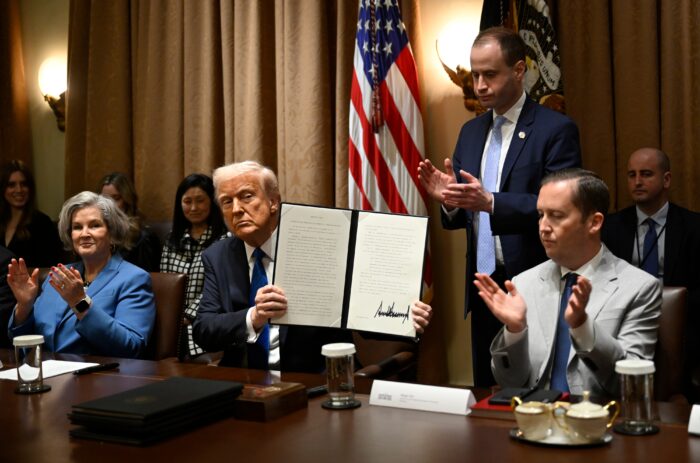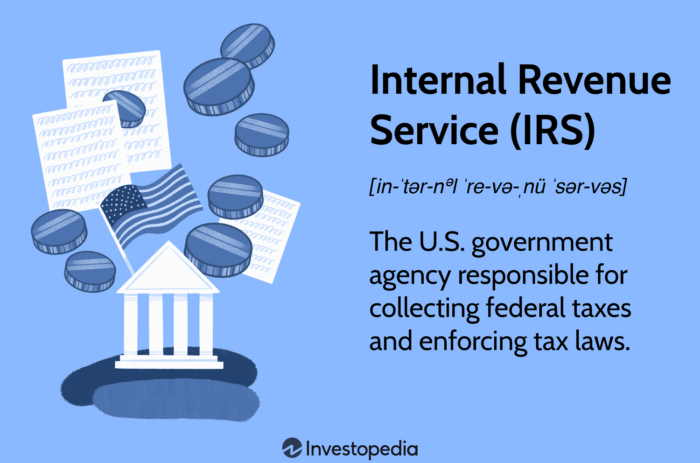redo Jump to...
print Print...
(US News and CBS News) – A federal judge heard arguments at a hearing Monday on whether he should temporarily block a new Louisiana law that requires the Ten Commandments to be displayed in every public school classroom by Jan. 1.
Louisiana, [whose governor and majority of the assembly are Republican], is the only state with such a requirement. [Texas and Utah tried to pass similar laws, but were not successful.] Proponents argue that the measure is not solely religious, but has historical significance to the foundation of U.S. law. But an expert witness brought in by the plaintiffs, argued against the legislation.
Steven Green, a legal historian and professor of law, history and religious studies at Willamette University in Oregon, testified that “there is next to no evidence” that the Ten Commandments were considered by the country’s founders while drafting the foundation of the U.S. government and legal system.
He added that the Ten Commandments were “indirectly influential at best” to the nation’s founders.
The legislation requires an at least 11×14 display of the Ten Commandments in “large, easily readable font” in all public classrooms, from kindergarten through state-funded universities.
“If you want to respect the rule of law, you’ve got to start from the original lawgiver, which was Moses” who got the commandments from God, Gov. Jeff Landry said after signing the bill into law in June.
Opponents questioned the law’s constitutionality and vowed to challenge it in court. Proponents said the measure is not solely religious, but that it has historical significance. In the language of the law, the Ten Commandments are “foundational documents of our state and national government.”
Reacting to the news of the new law, attorney Marina Medvin wrote on X:
“Interestingly, something we don’t discuss enough, our legal/justice system comes from the English system, but that system evolved from the courts of the Hebrews, from biblical times, from the times of Moses. While there is an appearance of religious favoritism through the requirement of knowing the Ten Commandments, our entire social and legal system is based on these commandments.”
The posters, which will be paired with a four-paragraph “context statement” describing how the Ten Commandments “were a prominent part of American public education for almost three centuries,” must be in place in classrooms by the start of 2025.
Under the law, state funds will not be used to implement the mandate. The posters would be paid for through donations.
The law also “authorizes” but does not require the display of other items in K-12 public schools, including: The Mayflower Compact, which was signed by religious pilgrims aboard the Mayflower in 1620 and is often referred to as America’s “First Constitution”; the Declaration of Independence; and the Northwest Ordinance, which established a government in the Northwest Territory — in the present day Midwest — and created a pathway for admitting new states to the Union.
U.S. District Judge John W. deGravelles did not immediately issue a ruling Monday, but said he will try to reach a decision by Nov. 15. That date is of importance as an agreement was reached by the court and state in July, in which five schools specifically listed in the lawsuit will not post the commandments in classrooms before that date. The deadline to comply, Jan. 1, 2025, remains in place for schools statewide.
In June, parents of Louisiana public school children, with various religious backgrounds, filed the lawsuit arguing that the legislation violates First Amendment language forbidding government establishment of religion and guaranteeing religious liberty.
The American Civil Liberties Union, Americans United for Separation of Church and State, and the Freedom from Religion Foundation said in a joint statement following the passage of the law that it prevents students from getting an equal education and will keep children who have different beliefs from feeling safe at school.
“Even among those who may believe in some version of the Ten Commandments, the particular text that they adhere to can differ by religious denomination or tradition. The government should not be taking sides in this theological debate,” the groups said.
Rev. Darcy Roake, a Unitarian Universalist minister who is one of the plaintiffs said,
“Neither my husband nor I follow that particular role of the Ten Commandments. In addition, without context, there might be a lot of questions that the teacher might not be able to answer themselves. It matters what we see every day, it matters to me what my children see every day. That’s why I want that separation. That is for my husband and I to have that conversation, not the school system.”
In a statement on the eve of the trial, the ACLU said the law “unconstitutionally pressure students into religious observance, veneration, and adoption of the state’s favored religious scripture. It also sends the harmful and religiously divisive message that students who do not subscribe to the Ten Commandments—or, more precisely, to the specific version of the Ten Commandments that H.B. 71 requires schools to display—do not belong in their own school community and should refrain from expressing any faith practices or beliefs that are not aligned with the state’s religious preferences.”
State House Representative Dodie Horton is the author of the bill. In April, she defended it before the House, saying the Ten Commandments are the basis of all laws in Louisiana, WWL-TV reported.
“I hope and I pray that Louisiana is the first state to allow moral code to be placed back in the classrooms,” Horton said. “Since I was in kindergarten [at a private school], it was always on the wall. I learned there was a God, and I knew to honor him and his laws.”
In April, State Senator Royce Duplessis said that he opposed the legislation.
“That’s why we have a separation of church and state,” said Duplessis, who is a Democrat. “We learned the 10 Commandments when we went to Sunday school. As I said on the Senate floor, if you want your kids to learn the Ten Commandments, you can take them to church.”
Across the country, there have been conservative pushes to incorporate religion into classrooms, from Florida legislation allowing school districts to have volunteer chaplains to counsel students to Oklahoma’s top education official ordering public schools to incorporate the Bible into lessons.
The new law in Louisiana has been touted by conservatives, including former President Donald Trump.
In June, the GOP presidential candidate posted on his social media network:
“I LOVE THE TEN COMMANDMENTS IN PUBLIC SCHOOLS, PRIVATE SCHOOLS, AND MANY OTHER PLACES, FOR THAT MATTER. READ IT – HOW CAN WE, AS A NATION, GO WRONG???”
Compiled from articles published at CBS News, US News & World Report with Associated Press and Daily Caller
Questions
1. What does Louisiana’s 10 Commandments law require public schools to do?
2. By what date does the law take effect?
3. a) Who is challenging the legislation?
b) For what reasons are they challenging the new law?
4. How are proponents of the law defending it?
5. What are the 10 Commandments (where did they come from)?
6. a) Jews and Christians regard the Ten Commandments as having been given by God to Moses, according to biblical accounts, on Mount Sinai. The 10 Commandments can be found in the Old Testament books of the bible: Exodus 20:3-17 and Deuteronomy 5:6-21 (and in a shortened version in Exodus 34:14-28) Read the 10 Commandments under “Background” below. Do you think they should be posted in school classrooms? Explain your answer.
b) Ask a parent AND a grandparent the same question.
CHALLENGE: Did you know?
In the 18th, 19th, and early 20th centuries, it was common practice for public schools to open with an oral prayer or Bible reading.
In 1955, the New York Board of Regents developed a prayer recommended (but not required) for school districts under its purview. The prayer was relatively short: “Almighty God, we acknowledge our dependence on Thee, and we beg Thy blessings upon us, our parents, our teachers, and our country.”
In two landmark decisions, Engel v. Vitale (1962) and Abington School District v. Schempp (1963), which focused primarily on school-sponsored Bible reading, the Supreme Court established what is now the current prohibition on state-sponsored prayer in US schools.
While the Engel decision held that the promulgation of an official state-school prayer stood in violation of the First Amendment’s Establishment Clause (thus overruling the New York courts’ decisions), Abington held that Bible readings and other public school-sponsored religious activities were prohibited. Madalyn Murray’s lawsuit, Murray v. Curlett, contributed to the removal of compulsory Bible reading from the public schools of the United States. (from wikipedia)
In 1980, the Supreme Court ruled against Kentucky’s law requiring the posting of the Ten Commandments in public schools. The court ruled 5-4 that the law violated the First Amendment’s Establishment Clause.
Whatever the outcome of this case, it is expected that whoever loses will appeal to the U.S. Supreme Court. Justices are sometimes referred to as liberal or conservative. More accurately, there are: constitutionalist (originalist) judges – they are judges who interpret the law as written; they determine what the original intent was when the founders wrote the Constitution. Republicans generally appoint activist judges. And then there are activist judges. Black’s Law Dictionary defines judicial activism as a “philosophy of judicial decision-making whereby judges allow their personal views about public policy, among other factors, to guide their decisions.” Democrats generally appoint activist judges.
Follow the outcome of this case and read how the justices rule.
Background
Louisiana House Bill 71 was signed into law in June 2024. Read the entire text here.
Read an excerpt from Louisiana bill 71 below:
It is the intention of the legislature that this Section shall not create an unfunded mandate on any public school governing authority. The school boards are encouraged to use documents that are printed and made available to the schools free of charge.
(1) No later than January 1, 2025, each public school governing authority shall display the Ten Commandments in each classroom in each school under its jurisdiction. The nature of the display shall be determined by each governing authority with a minimum requirement that the Ten Commandments shall be displayed on a poster or framed document that is at least eleven inches by fourteen inches. The text of the Ten Commandments shall be the central focus of the poster or framed document and shall be printed in a large, easily readable font.
The text shall read as follows:
The Ten Commandments:
I AM the LORD thy God. Thou shalt have no other gods before me.
Thou shalt not make to thyself any graven images.
Thou shalt not take the Name of the Lord thy God in vain.
Remember the Sabbath day, to keep it holy.
Honor thy father and thy mother, that thy days may be long upon the land which the Lord thy God giveth thee.
Thou shalt not kill.
Thou shalt not commit adultery.
Thou shalt not steal.
Thou shalt not bear false witness against thy neighbor.
Thou shalt not covet thy neighbor’s house.
The Ten Commandments shall be displayed with a context statement as follows:
The History of the Ten Commandments in American Public Education:
The Ten Commandments were a prominent part of American public education for almost three centuries. Around the year 1688, The New England Primer became the first published American textbook and was the equivalent of a first grade reader. The New England Primer was used in public schools throughout the United States for more than one hundred fifty years to teach Americans to read and contained more than forty questions about the Ten Commandments.
The Ten Commandments were also included in public school textbooks published by educator William McGuffey, a noted university president and professor. A version of his famous McGuffey Readers was written in the early 1800s and became one of the most popular textbooks in the history of American education, selling more than one hundred million copies. Copies of the McGuffey Readers are still available today.
The Ten Commandments also appeared in textbooks published by Noah Webster in which were widely used in American public schools along with America’s first comprehensive dictionary that Webster also published. His textbook, The American Spelling Book, contained the Ten Commandments and sold more than one hundred million copies for use by public school children all across the nation and was still available for use in American public schools in the year 1975.”
(4)(a) A public school may also display the Mayflower Compact, the Declaration of Independence, and the Northwest Ordinance, as provided in R.S.
26 25:1282, along with the Ten Commandments.
This Section shall not require a public school governing authority to spend its funds to purchase displays. In order to fund the displays free of charge, the school public governing authority shall do either of the following:
(a) Accept donated funds to purchase the displays.
(b) Accept donated displays.
Daily “Answers” emails are provided for Daily News Articles, Tuesday’s World Events and Friday’s News Quiz.



